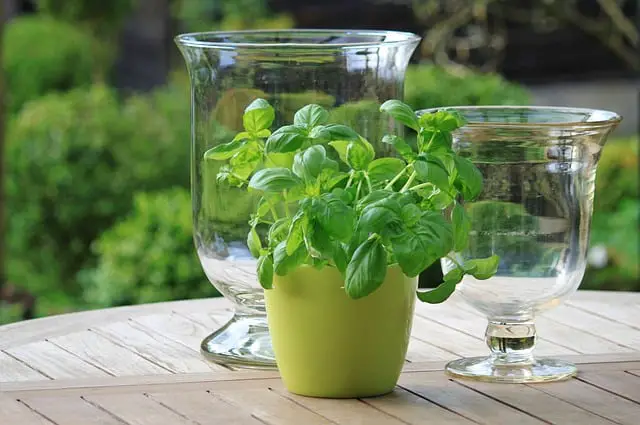Basil is a popular herb used in many dishes around the world. However, yellowing leaves with brown spots can be a common issue for basil plants. This can be caused by a variety of factors, including diseases, pests, nutritional deficiencies, and environmental conditions.
Understanding the basics of basil plant care is essential to prevent and treat yellowing leaves with brown spots. Identifying the symptoms of the problem is the first step in determining the cause.
Common diseases and pests that affect basil plants include Fusarium, downy mildew, aphids, and spider mites. Environmental factors such as too much or too little sunlight, water, or temperature can also cause yellowing leaves with brown spots. Nutritional deficiencies, such as a lack of nitrogen, can also be a culprit.
Key Takeaways on Basil Leaves Turning Yellow with Brown Spots
- Yellowing leaves with brown spots can be caused by a variety of factors, including diseases, pests, nutritional deficiencies, and environmental conditions.
- Identifying the symptoms of the problem is the first step in determining the cause.
- Proper basil plant care, including prevention and treatment of common issues, is essential to maintain healthy plants.
Check out these other top posts in this category:
- Azalea Yellow Leaves Brown Spots:
- Avocado Plant Brown Spots on Leaves:
- Blueberry Leaves Turning Yellow with Brown Spots:
Understanding Basil Leaves
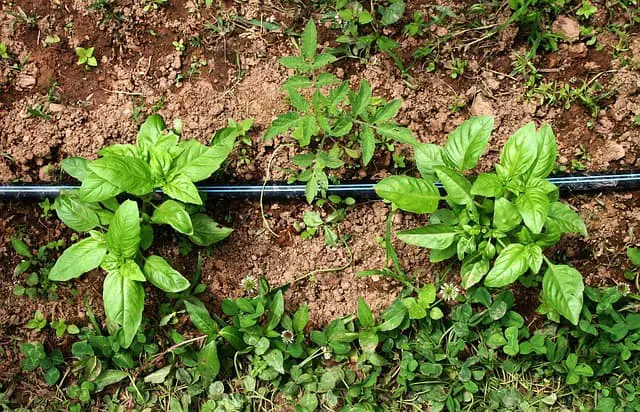
Basil is an annual herb that is widely cultivated for its aromatic leaves. It is a popular herb in cooking and has a sweet, slightly peppery flavor. However, basil leaves can sometimes develop yellowing and brown spots, which can be a cause for concern.
Yellowing of basil leaves can be a sign of several issues, including fungal diseases, nutrient deficiencies, or pests. Fungal diseases such as downy mildew, fusarium wilt, and cercospora leaf spot can cause yellowing and browning of basil leaves. These diseases can spread rapidly and damage the entire plant if not treated promptly.
Nutrient deficiencies, such as a lack of nitrogen, can also cause yellowing of basil leaves. Nitrogen is an essential nutrient for plant growth and development, and a deficiency can affect the plant’s ability to produce chlorophyll, which gives leaves their green color.
In addition, pests such as aphids, spider mites, and whiteflies can damage the leaves, causing yellowing and browning.
It is important to identify the cause of yellowing and brown spots on basil leaves to determine the appropriate treatment. If the cause is a fungal disease, it may be necessary to remove infected leaves and treat the plant with a fungicide.
If the cause is a nutrient deficiency, it may be necessary to fertilize the plant with a nitrogen-rich fertilizer. If the cause is pests, it may be necessary to use an insecticide or other pest control measures.
Sweet basil varieties are particularly susceptible to yellowing and brown spots on leaves. These varieties are commonly used in cooking and have a delicate flavor that can be affected by plant stress. It is important to maintain healthy, well-fed plants to prevent yellowing and browning of leaves.
Identifying Symptoms
When growing basil, it’s important to keep an eye out for any signs of distress. Yellowing leaves, brown spots, streaks, wilting, and leaf drop are all symptoms that can indicate a problem with your basil plant. In this section, we will go over each of these symptoms in detail.
1. Yellowing Leaves
Yellowing leaves are a common symptom of basil plants that are not receiving enough nutrients or sunlight. If the leaves are yellow but the veins remain green, this is usually a sign of iron deficiency.
If the entire leaf is yellow, this could be due to a lack of nitrogen. Over-watering can also cause yellowing leaves, so make sure to check the soil moisture level before watering your basil plant.
2. Brown Spots
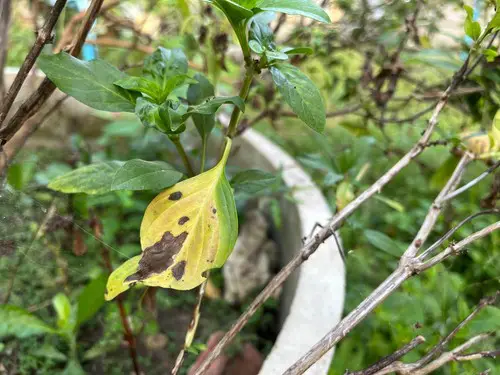
Brown spots on basil leaves are often caused by fungal or bacterial infections. These spots can start small and grow larger over time, eventually causing the leaves to turn brown and fall off.
To prevent the spread of infection, it’s important to remove any infected leaves as soon as possible. Brown spots can also be caused by sunburn, frost damage, or insect infestations.
3. Streaks
Streaks on basil leaves can indicate a fungal infection, such as Fusarium wilt or Downy mildew. These infections can cause yellowing, wilting, and leaf drop in addition to streaks. If you notice streaks on your basil leaves, it’s important to remove any infected leaves and treat the plant with a fungicide.
4. Wilting
Wilting is a sign that your basil plant is not receiving enough water. This can be caused by under-watering or over-watering, so it’s important to check the soil moisture level regularly. Wilting can also be a sign of root rot, which is caused by over-watering and can be fatal to your basil plant.
5. Leaf Drop
Leaf drop is a common symptom of stress in basil plants. This can be caused by a variety of factors, including over-watering, under-watering, nutrient deficiencies, and insect infestations. If you notice your basil plant dropping leaves, it’s important to identify and address the underlying cause as soon as possible.
Common Diseases and Pests
Basil is a popular herb that is easy to grow, but it is not immune to diseases and pests. Yellowing and brown spots on basil leaves can be caused by a variety of factors, including fungal and bacterial diseases, and pest infestations. In this section, we’ll explore the most common diseases and pests that affect basil plants.
Fungal Diseases
Fungal diseases are a common cause of yellowing and brown spots on basil leaves. One of the most common fungal diseases that affect basil plants is downy mildew, which is caused by the pathogen Peronospora belbahrii.
This fungus thrives in humid and cool conditions, and symptoms include yellowing and brown spots on the upper surface of the leaves, as well as white or grayish mold on the underside of the leaves.
Another fungal disease that affects basil plants is Colletotrichum fungus, which causes anthracnose. Symptoms of this disease include yellowing and brown spots on the leaves, as well as black lesions on the stems and leaves. This fungus thrives in warm and humid conditions, and it can be spread through water, wind, and insects.
Bacterial Diseases
Bacterial infections can also cause yellowing and brown spots on basil leaves. One of the most common bacterial diseases that affect basil plants is Pseudomonas cichorii, which causes angular leaf spot. Symptoms of this disease include yellowing and brown spots on the leaves, as well as angular lesions on the leaves and stems.
Another bacterial disease that affects basil plants is basil shoot blight, which is caused by the bacterium Pseudomonas syringae pv. syringae. This disease can cause yellowing and brown spots on the leaves, as well as wilting and dieback of the shoots.
Pest Infestations
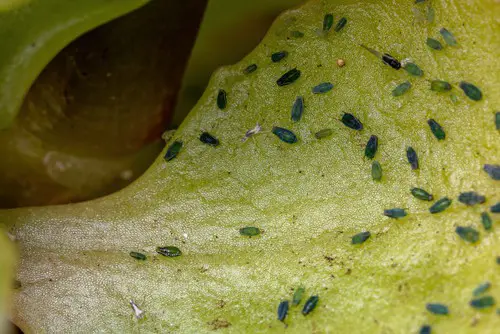
Pests can also cause yellowing and brown spots on basil leaves. One of the most common pests that affect basil plants is aphids. These small insects suck the sap from the leaves and stems of the basil plant, causing yellowing and curling of the leaves, as well as the formation of sticky honeydew on the leaves.
Another pest that can affect basil plants is thrips. These tiny insects feed on the leaves and flowers of the basil plant, causing yellowing and brown spots on the leaves, as well as distorted growth and reduced vigor.
Environmental Factors
Yellowing leaves with brown spots on basil plants can be caused by a variety of environmental factors. In this section, we’ll explore some of the common environmental factors that can cause basil leaves to turn yellow with brown spots.
1. Watering Issues
Overwatering or underwatering can cause yellowing leaves with brown spots on basil plants. Basil plants require regular watering, but it’s important not to overwater them. Overwatering can cause root rot and other fungal diseases, which can lead to yellowing leaves with brown spots.
On the other hand, underwatering can cause the plant to become stressed, leading to yellowing leaves with brown spots. To avoid these issues, make sure to water your basil plant regularly, but not too much.
2. Soil Conditions
The soil in which basil plants are grown can also affect their health. Basil plants prefer well-draining soil with a pH between 6.0 and 7.5. If the soil is too acidic or alkaline, the plant may not be able to absorb nutrients properly, leading to yellowing leaves with brown spots. To avoid this, test the pH of your soil and adjust it if necessary.
3. Sunlight and Air Circulation
Basil plants require plenty of sunlight and air circulation to thrive. If the plant is not receiving enough sunlight or air circulation, it can become stressed and develop yellowing leaves with brown spots. Make sure to place your basil plant in a location that receives at least 6 hours of direct sunlight per day, and provide adequate air circulation around the plant.
4. Temperature Extremes
Extreme temperatures can also cause yellowing leaves with brown spots on basil plants. Frost damage, sunburn, and lack of sun can all lead to stressed plants and yellowing leaves with brown spots. Basil plants prefer warm, humid conditions, so make sure to keep them away from cold drafts and extreme temperatures.
Nutritional Deficiencies
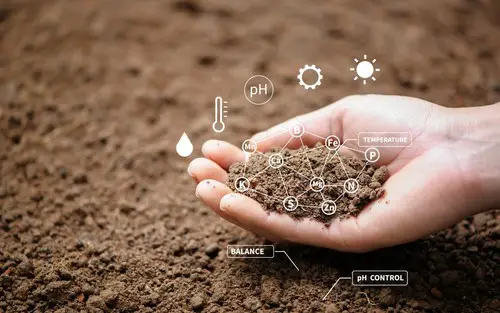
When basil leaves turn yellow with brown spots, it could be a sign of a nutrient deficiency. Nutrients are essential for the growth and health of plants, and a lack of nutrients can cause various problems, including yellowing leaves with brown spots.
Potassium Deficiency
Potassium is a vital nutrient for plants, and a deficiency can cause yellowing of leaves with brown spots. Potassium is necessary for the growth and development of plants and helps regulate water balance, enzyme activation, and photosynthesis.
To prevent potassium deficiency, gardeners can use all-purpose fertilizers that contain a balanced ratio of nutrients. Organic fertilizers, such as compost, can also provide potassium to the soil. Gardeners can also add potassium-rich amendments, such as wood ash or kelp meal, to the soil.
Nitrogen Deficiency
Nitrogen is another essential nutrient for plants, and a deficiency can cause yellowing of leaves with brown spots. Nitrogen is necessary for the growth and development of leaves and helps regulate photosynthesis and protein synthesis.
To prevent nitrogen deficiency, gardeners can use all-purpose fertilizers that contain a balanced ratio of nutrients. Organic fertilizers, such as compost and manure, can also provide nitrogen to the soil. Gardeners can also plant nitrogen-fixing cover crops, such as clover or beans, to improve soil fertility.
Over or Under Fertilization
Over or under fertilization can also cause yellowing of leaves with brown spots. Over-fertilization can cause nutrient burn, where the roots absorb too many nutrients, leading to leaf discoloration and damage. Under-fertilization can cause nutrient deficiency, where the roots do not absorb enough nutrients, leading to leaf discoloration and damage.
To prevent over or under fertilization, gardeners should follow the manufacturer’s instructions when using synthetic fertilizers and use organic fertilizers in moderation. Gardeners can also test the soil regularly to determine the nutrient levels and adjust the fertilizer application accordingly.
Basil Plant Care
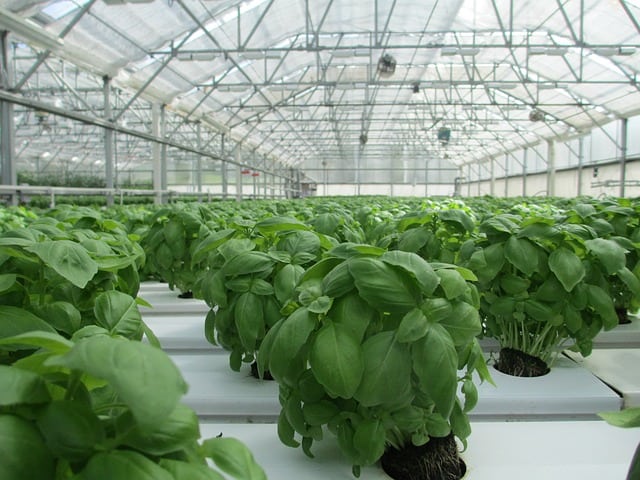
Basil is a popular herb that is easy to grow and care for. However, yellowing leaves with brown spots are a common issue that many basil growers face. Proper care can prevent this problem and keep your basil plants healthy.
1. Proper Watering Habits
Proper watering habits are essential for healthy basil plants. Overwatering can lead to root rot, while underwatering can cause the leaves to turn yellow. Basil plants prefer moist, well-drained soil. Water the plants deeply once a week, or more often in hot, dry weather. Avoid getting water on the leaves, as this can promote fungal growth.
2. Adequate Plant Spacing
Adequate plant spacing is essential for healthy basil plants. Crowded plants can lead to poor air circulation, which can promote fungal growth. Basil plants should be spaced at least 12 inches apart. If you are growing basil in containers, use a container that is at least 6 inches deep and wide.
3. Pruning and Flowering
Pruning and flowering are essential for healthy basil plants. Basil plants should be pruned regularly to promote bushy growth and prevent flowering. Flowering can cause the leaves to turn yellow and bitter. To prune basil, pinch off the top two sets of leaves when the plant is 6 inches tall. This will encourage the plant to branch out and produce more leaves.
4. Growing Basil Indoors
Growing basil indoors is a great way to enjoy fresh herbs all year round. Basil plants need bright, indirect light to grow indoors. If you don’t have a sunny window, use a grow light to provide the necessary light. Basil plants grown indoors should be watered when the top inch of soil feels dry to the touch.
By following these proper care techniques, you can prevent yellowing leaves with brown spots on your basil plants. Whether you are growing basil from seeds, cuttings, or as houseplants, proper watering habits, adequate plant spacing, pruning, and flowering are essential for healthy basil plants.
Prevention and Treatment
Yellowing leaves with brown spots can be a sign of various problems, such as improper watering, nutrient deficiencies, pests, or diseases. Preventing these issues is the best way to keep basil plants healthy and productive. Here are some tips for prevention and treatment:
1. Proper Watering
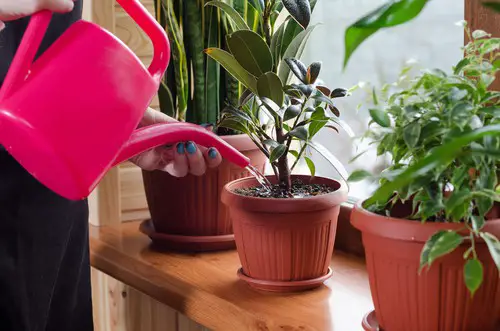
Overwatering or underwatering can cause yellowing leaves with brown spots. Basil plants prefer moist, well-draining soil. Water the plants deeply and infrequently, allowing the soil to dry out slightly between waterings. Use a soaker hose or drip irrigation to avoid wetting the leaves, which can lead to fungal diseases.
Avoid watering the plants in the evening, as this can promote fungal growth.
2. Nutrient Management
Basil plants need adequate nutrients to grow and produce healthy leaves. Use compost or other organic matter to improve soil fertility. Apply balanced fertilizer according to the instructions on the package. Monitor the plants for signs of nutrient deficiencies, such as yellowing leaves with brown spots.
Magnesium and potassium deficiencies are common in basil plants and can cause yellowing between the leaf veins. Consider adding kelp meal or greensand to the soil to provide these nutrients.
3. Pest Control
Slugs, caterpillars, and other pests can damage basil leaves and cause yellowing with brown spots. Use neem oil or other organic pest control methods to keep pests in check. Bacillus thuringiensis (Bt) is an effective biological control for caterpillars. Remove any damaged or infested leaves promptly to prevent further damage.
4. Disease Management
Fungal diseases such as root rot and leaf spot can cause yellowing leaves with brown spots. Use a fungicide according to the instructions on the package to control these diseases. Baking soda is a natural fungicide that can be used to prevent and treat fungal diseases.
Mix one tablespoon of baking soda with one gallon of water and spray the plants thoroughly.
5. Frost Protection
Basil plants are sensitive to frost and can develop yellowing leaves with brown spots if exposed to cold temperatures. Cover the plants with a frost cloth or other protective material if frost is expected. Move potted plants indoors or to a sheltered location if necessary.
6. Reproductive Management
Basil plants can become leggy and less productive if allowed to flower and set seed. Pinch off the flower buds as soon as they appear to encourage bushy growth and more leaves. Use the harvested leaves to make pesto or other dishes, or freeze them for later use. Consider saving some seeds from a healthy plant for next year’s crop.
7. Safe Seeds
Using safe seeds is important to prevent yellowing leaves with brown spots caused by viral or bacterial diseases. Purchase seeds from a reputable source and avoid saving seeds from diseased plants. Clean and disinfect any gardening tools or containers used for infected plants to prevent the spread of disease.
Frequently Asked Questions
Can yellow basil leaves still be eaten?
Yellow basil leaves are safe to consume, but they may not taste as good as healthy green leaves. The yellow color is an indication that the plant is not getting enough nutrients or water.
What causes basil leaves to turn yellow and brown?
Basil leaves can turn yellow and brown due to several reasons, including overwatering, underwatering, nutrient deficiencies, fungal or bacterial infections, pests, or environmental stress.
How can I treat yellow basil leaves?
The treatment for yellow basil leaves depends on the cause of the problem. If the plant is overwatered, reduce the frequency of watering. If it is underwatered, increase the frequency. Yellow leaves caused by nutrient deficiencies can be treated with fertilizers. Fungal or bacterial infections require the use of appropriate fungicides or bactericides.
Are black spots on basil leaves safe to consume?
Black spots on basil leaves may be an indication of a fungal or bacterial infection. It is best to remove the affected leaves and not consume them.
How do I prevent brown spots on basil leaves?
To prevent brown spots on basil leaves, make sure the plant is getting adequate water, sunlight, and nutrients. Avoid overwatering or underwatering the plant. Keep the plant in a well-ventilated area to prevent fungal or bacterial infections. Regularly inspect the plant for pests and take appropriate measures to control them.
Is it necessary to remove yellow leaves from basil plants?
It is recommended to remove yellow leaves from basil plants as they are an indication of a problem with the plant. Removing them can help the plant focus its energy on producing healthy new leaves.

Hey, I’m Lisa and I’ve been an avid gardener for over 30 years. I love writing, talking and living in the garden! Feel free to connect with me on my socials below

